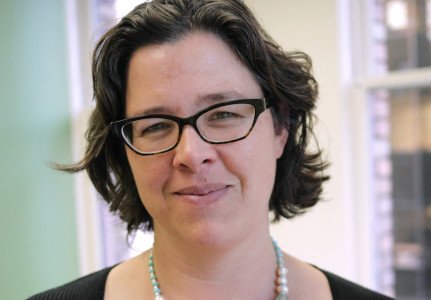By Kate Gordon
 I’m newly back from vacation and was all primed to write about climate shenanigans in Washington State; California’s efforts to get to 50 percent renewables, efficiency, and cuts in petroleum use by 2030 (all very doable according to UCS among others); and Chinese President Xi Jinping’s upcoming visit to the U.S.
I’m newly back from vacation and was all primed to write about climate shenanigans in Washington State; California’s efforts to get to 50 percent renewables, efficiency, and cuts in petroleum use by 2030 (all very doable according to UCS among others); and Chinese President Xi Jinping’s upcoming visit to the U.S.
But these lofty plans were disrupted this week by the appearance of an AP article evaluating the California Clean Energy Jobs Act, or Proposition 39.
Despite several major inaccuracies and incomplete assertions, the article has gone viral, perhaps because it includes the phrase “green jobs”—two words that seem to bring out the worst of the anti-clean energy crowd. As someone who worked tirelessly to implement Proposition 39, and who has been appointed to the Prop 39 Citizen Oversight Board, I feel it’s my duty to clear up some of the confusion.
First, some background for those who haven’t been obsessively following this issue: Proposition 39 was passed in November 2012 to close a corporate tax loophole that allowed multi-state corporations to choose whether to pay taxes on their workers or their sales in California. As a result of Prop 39, the state now employs the “single sales factor” method, which requires all corporations to pay taxes based on their in-state sales rather than their in-state workers, taking away the incentive to fire California workers in order to lower corporate taxes. That in itself was a win.
To add additional benefits to the state, the Proposition directed half the funds generated by this tax change toward clean energy projects in the state. After the election, the legislature passed a measure focusing these funds on energy projects in schools, which the California Energy Commission (CEC) then turned into regulatory language. The Prop 39 funds, which schools can access in addition to current state education funds or local bond measures for operations and maintenance, allow districts to do energy efficiency and renewable energy projects they would not otherwise have been able to pursue. That’s another win.
Finally, the legislature directed the CEC to ensure these funds were spent as carefully and with as much accountability as possible—requiring, for instance, that districts applying for funds provide at least a year of utility energy data, to show their current energy use, as well as the results of an energy audit showing where the school can get the biggest bang for the buck from Proposition 39 funds. That’s good financial practice and good government, and it should reassure California voters.
All of this sounds pretty good, right? Not according to the AP, which went after this school energy program with a vengeance. The reporter’s first mistake: to claim to be evaluating the program after three years of operation. In fact, funding has only been flowing from the CEC for 13 months. Because the program is funded through tax receipts, the state had to wait for the first tax year after the election to end before initiating the program; meanwhile, the legislature and CEC had to fulfill their democratic duty of passing and implementing the program details and enshrining these into law.
Evaluating Proposition 39 after just over a year of its 5-year operation is like calling the Super Bowl after just a week of preseason games. It’s simply not reasonable—especially since the projects that have been done under the proposition thus far are mostly those in the smallest districts, while the larger districts with much larger and more extensive projects (think LAUSD, Oakland, San Jose) waited until they had amassed several years of funding in order to propose their projects, and many must wait til next winter or summer break to start construction.
Another mistake: to denigrate the fact that a portion of the funds have gone to “consultants and auditors” rather than to construction costs. Energy projects are complex and require expertise, and at the very least require an audit to determine where funds would be best spent to save the maximum amount of energy and dollars. I personally wouldn’t do an energy retrofit without a professional audit, and I would hope my school district would take a similarly prudent approach. We should celebrate these schools’ planning and deliberation, not denigrate it. Moreover, many of those dreaded “consultants” are members of the non-profit California Conservation Corps, which is providing audits for the lower-income districts and training at-risk youth to do energy efficiency work. Is the AP saying that schools like Helen Wilcox School in Oroville, north of Sacramento, shouldn’t get new and more efficient lights simply because the work is being done by CCC members and not creating any traditional “new jobs”?
And finally: the reporter’s mistaken claims about the Oversight Board. The AP piece has many other inconsistencies and errors that I won’t get into here, but I can’t leave this one alone. Yes, it’s true that the oversight board has never met. But that’s not because we’re just a “rubber stamp” created by the political process—it’s because under the CEC’s regulations, we aren’t supposed to meet til this fall, when we’ll be able to review and discuss the first tranche of data from the hundreds of completed Prop 39 projects that have been underway across the state during the past year. That’s right: I said hundreds of completed projects. You can find a full list of them on the CEC site here, along with the fact that they’ve already saved the state’s schools over $25 million in energy costs.
I’m looking forward to that fall Citizen Oversight Board meeting, where our discussion—unlike the AP article—will be based on real data and solid information. I hope to see many of you there.




